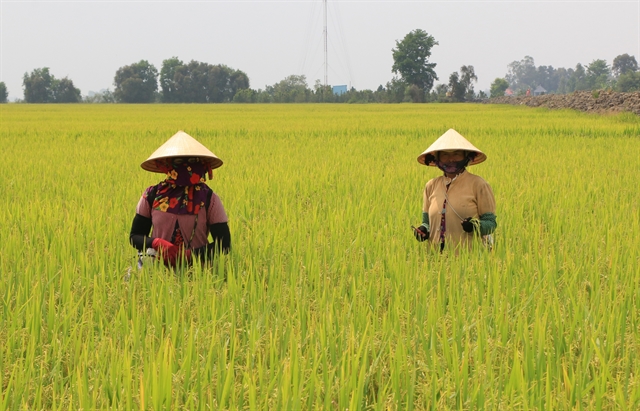
ĐỒNG THÁP — The Cửu Long (Mekong) Delta province of Đồng Tháp will not cultivate autumn-winter rice on more than 88,000ha during this year’s flooding season.
Instead, it will release floodwaters into the fields to “fertilize it and destroy disease germs,” says a VNA report.
The province is the delta’s first locality that receives floodwaters caused by the rise in water levels of the Mekong River in the rainy season.
The flooding brings in fertile silt and deposits it in Việt Nam’s Mekong Delta before merging with the sea. The flooded areas are also rich in marine life.
After farmers harvest the summer- autumn rice, they will release floodwaters into the fields between July and December. The fields are estimated to be 0.4 – 2 meters under water during this period.
The fields are located mostly in Châu Thành, Cao Lãnh and Tháp Mười districts, and each will release floodwaters into 15,000 – 23,000ha.
In Hồng Ngự District, which is the province’s first to receive the floodwaters, local authorities plan to release it into 11,000ha of rice fields.
The district authorities will inform farmers about the release and have warned that they will strictly punish those who grow the autumn – winter rice in unzoned areas.
The autumn – winter rice is the third rice crop of the year.
If three rice crops are planted on fields each year without a break, the soil becomes infertile quickly, causing high production cost and rice not to grow well.
Lê Quốc Điền, deputy director of the province’s Department of Agriculture and Rural Development, said floodwater levels in localities are expected forecasted to increase gradually starting from the middle of this month because of the combination of high tides and floodwaters from the Mekong River’s upstream areas.
Floodwater levels in the province’s upstream localities are expected to rise to 2 – 2.5 meters. They are also estimated to reach their peak in October at higher levels than last year.
The release of floodwaters into 88,000ha of rice fields also aims to prevent the adverse impacts of heavy rains and flooding; and secure safe production, in other areas, Điền said.
Basing on the conditions of localities, each will identify in detail the location of the autumn–winter rice, he added.
The province plans to plant a total of 113,600ha of rice and 8,123ha of vegetables and short-term cash crops in the autumn – winter rice, according to the department.
Farmers should only grow the autumn – winter rice in areas that are well protected by dykes, the department has advised.
In past years, the province has built flood controlling embankments in flood-prone areas to grow the autumn – winter rice during the flooding season.
However, the province has decided to stop growing the autumn – winter rice in many upstream areas this season, including in areas protected by embankments, allowing floodwaters to replenish the fields
Besides bringing in fresh sediments into fields, the flood season also offers livelihoods for locals as they can catch aquatic species in floodwaters or breed them in flooded fields. — VNS
- Reduce Hair Loss with PURA D’OR Gold Label Shampoo
- Castor Oil Has Made a “Huge” Difference With Hair and Brow Growth
- Excessive hair loss in men: Signs of illness that cannot be subjective
- Dịch Vụ SEO Website ở Los Angeles, CA: đưa trang web doanh nghiệp bạn lên top Google
- Nails Salon Sierra Madre
 VnExpress News The News Gateway of Vietnam
VnExpress News The News Gateway of Vietnam





